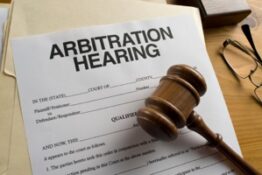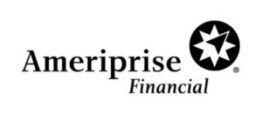
Everyone like to talk about cases that they win. However, what about the cases that you lose. More importantly, what are you going to do when the arbitrators get it wrong.
The answer is nothing. As Judge Posner once stated: “Short of authorizing “trial by ordeal or, more doubtfully by a panel of three monkeys, parties can stipulate to whatever procedures they want to govern the arbitration of their disputes.” Bavarati v. Josephtal, Lyon & Ross, Inc., 28 F.3d 704, 709 (7th Cir. 1994)(Barrack H. Obama, Esquire, as counsel for Plaintiff/Appellee Ahmad Baravati).
The Federal Arbitration Act, 9 U.S.C. Section 10, provides only a very limited basis to contest or seek to vacate an arbitration award, and states”
(a) In any of the following cases the United States court in and for the district wherein the award was made may make an order vacating the award upon the application of any party to the arbitration—
(1) where the award was procured by corruption, fraud, or undue means;
(2) where there was evident partiality or corruption in the arbitrators, or either of them;
(3) where the arbitrators were guilty of misconduct in refusing to postpone the hearing, upon sufficient cause shown, or in refusing to hear evidence pertinent and material to the controversy; or of any other misbehavior by which the rights of any party have been prejudiced; or
(4) where the arbitrators exceeded their powers, or so imperfectly executed them that a mutual, final, and definite award upon the subject matter submitted was not made.
The “Judicial review of arbitration awards is tightly limited; perhaps it ought not be called ‘review’ at all.” 28 F.3d at 705. However, the FINRA arbitrators get to interpret FINRA’s Rules. “[T]he Court does not oversee arbitrators’ procedural rules.” Howsam v. Dean Witter Reynolds, Inc., 537 U.S. 79, 91 (2002), and like it or not, everyone is bound by the arbitrators’ interpretation of their own Rules.
Rule 12206 of the Code of Arbitration Procedure impose time limits for the eligibility of investor claims, indeed all claims, before FINRA and states:
(a) Time Limitation on Submission of Claims
No claim shall be eligible for submission to arbitration under the Code where six years have elapsed from the occurrence or event giving rise to the claim. The panel will resolve any questions regarding the eligibility of a claim under this rule.
Prior to 1998, it was the Director of Arbitration that determined the eligibility of matters of submitted to NASD Arbitration. (Previously Section 15 of the NASDR Code of Arbitration Procedure). Between 1998 and 2005, in substantial part, based upon the Federal Arbitration Act, “arbitrability,” or the eligibility of matters submitted to arbitration was determined by the courts.
However, following the Supreme Court’s decision in Howsam v. Dean Witter Reynolds, Inc. 537 U.S. 79 (2002), the Code of Arbitration Procedure was specifically amended in 2005 to permit the Arbitrators to determine matters of eligibility. See, NASD Notice to Members 05-10. This Section was not changed by the re-codification of the NASD Code of Arbitration Procedure in April 2007.
Consistently, throughout the years, when the Director of Arbitration determined eligibility under the Code, the Director held that the “occurrence or event giving rise to the dispute, claim or controversy” is the date claimants discovered the fraud or wrongdoing, not the purchase date of claimants’ investment.
Most Courts also hold that there is an exception to the six-year eligibility requirement where the wrongful conduct has been fraudulently concealed. Dean Witter Reynolds, Inc. v. McCoy, 995 F.2d 649, 651 (6th Cir. 1993); FSC Securities Corporation v. Freel, 811 F.Supp. 439, 444 (D.Minn, 1993) aff’d 14 F.3d 1310 (8th Cir. 1994)(“Contrary to plaintiffs’ assertion, the language of section 15 [NASD Rule 10304] does not clearly indicate that the six year limitation period commences on the date of purchase; rather it measures the six-year period from ‘the occurrence or event giving rise to the act or dispute, claim or controversy.’”); See also, Goldberg v. Parker, 1995 WL 396568, *3-4 (N.Y. Sup. Ct. 1995)(“selection of the purchase date as the starting point for computing the six-year eligibility period, rather than the date of the discovery of the fraud” is “inappropriate.”).
When a claim “comes into existence” is peculiarly a question of fact inappropriately resolved by a motion to dismiss. Bohus v. Beloff, 950 F.3d 919 (3d Cir. 1991)(when a plaintiff discovers the existence of a claim, or his injury is peculiarly a question of fact); Lujan v. Mannsman, 956 F.Supp. 1218 (E.D. Pa. 1997)(the point at which complainant should reasonably be aware of the injury is a jury question, and not appropriately determined as a matter of law); Gray v. Winthrop Corp., 82 F.3d 877, 881 (9th Cir. 1996)(same).
In arbitration, the parties are provided the opportunity to submit pertinent evidence in support of their claims or defenses. See, e.g., British Ins. Co. of Cayman v. Water Street Ins. Co. Ltd., 93 F. Supp. 2d 506, 519 (S.D.N.Y. 2000)(“In sum, it is these facts which would present issues of fundamental fairness if a final award were issued without the development of an additional record on the merits.”)(quoting, Areca v. Oppenheimer & Co., Inc., 960 F. Supp. 52, 54 (S.D.N.Y. 1997)(finding that if an arbitrator refuses to hear material and pertinent evidence, prejudicing one of the parties, the award may be set aside); Konkar Maritime Enterprises, S.A. v. Compagnie Belge D’Affretement, 668 F. Supp. 267, 271 (S.D.N.Y. 1987) (“All parties in an arbitration proceeding are entitled to … an opportunity to be heard [and] must be allowed to present evidence without unreasonable restriction.”)(quoting Totem Marine Tug & Barge, Inc. v. North American Towing, Inc., 607 F.2d 649, 651 (5th Cir. 1979)).
In connection with any Motion to Dismiss, before any court or any other forum, including FINRA Dispute Resolution, the Court or the Panel must accept all the allegations and all reasonable inferences therefrom, as true, and also must construe those allegations in the light most favorable to the non-moving party. Scheuer v. Rhodes, 416 U.S. 232, 236 (1974); Conley v. Gibson, 355 U.S. 41, 45-46 (1957); Hishon v. King & Spalding, 457 U.S. 69, 73 (1984); Jordan v. Fox, Rothschild, O’Brien & Frankel, 20 F.3d 1250, 1261 (3rd Cir. 1994); See also, Goldman v. Belden, 754 F.2d 1059, 1067 (2d Cir. 1985).
However, on February 14, 2023, an arbitration panel sitting in Tampa, Florida issued a final award and determined that an injured investor was not entitled to an evidentiary hearing to determine when he knew of should have known of the existence of his claims. The investor’s Statement of Claim clearly states that the investor did not have notice of the fraud until one of the recommended investments became worthless in 2020, well within the six year period of “eligibility.”
The Panel, of course, ignored this information, and also ignored the appropriate standard of review in connection with any motion to dismiss. Investors are not required to try their case on the pleadings, and when an investor discovers, or should have discovered the existence of their claims is peculiarly a question of fact inappropriately determined without an evidentary hearing.
In this case, the Panel decided that rather than requiring an evidentiary hearing, the investor and his counsel should have just made up a date, or provided a specific date, when the investor suspected misconduct, after one of the subject investments became worthless in 2020. The Panel decided that:
“Claimant did not indicate any date of a cause of action after the purchase date, such as when Claimant discovered the fraud or wrongdoing. Claimant did not give any alternative dates, either in the pleadings or in argument during the pre-hearing conference on the Motion to Dismiss, which could have tolled the Rule 12206 deadline as the date of the ‘occurrence or event giving rise to the dispute, claim or controversy.’ Therefore, the purchase date stood as the date of the occurrence which is more than six (6) years prior to the filing of the Statement of Claim.”
FINRA Arbitration No. 22-00358.
Our client still has the opportunity to pursue his claims in court. However, it is disheartening when the arbitrators get it wrong, and there is not much you can do about it, other than be more vigilant in the selection and ranking of arbitrators.
Coincidentally, the subject broker, as of even date, is or has been the subject of twenty-nine (29) customer initiated, investment related claims totaling several million dollars and substantial involving the same or similar conduct.
The Respondent was represented by Benjamin J. Biard, Esquire of Winget, Spadafora, Schwartzberg, LLP, in Miami, Florida. The arbitration panel consisted of Mimi B. Osiason, Chairperson, and Maurice M. Feller and Kathy A. Tatone as Public Arbitrators.








